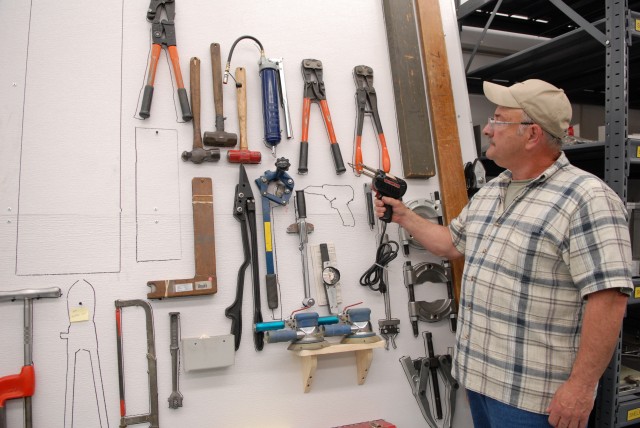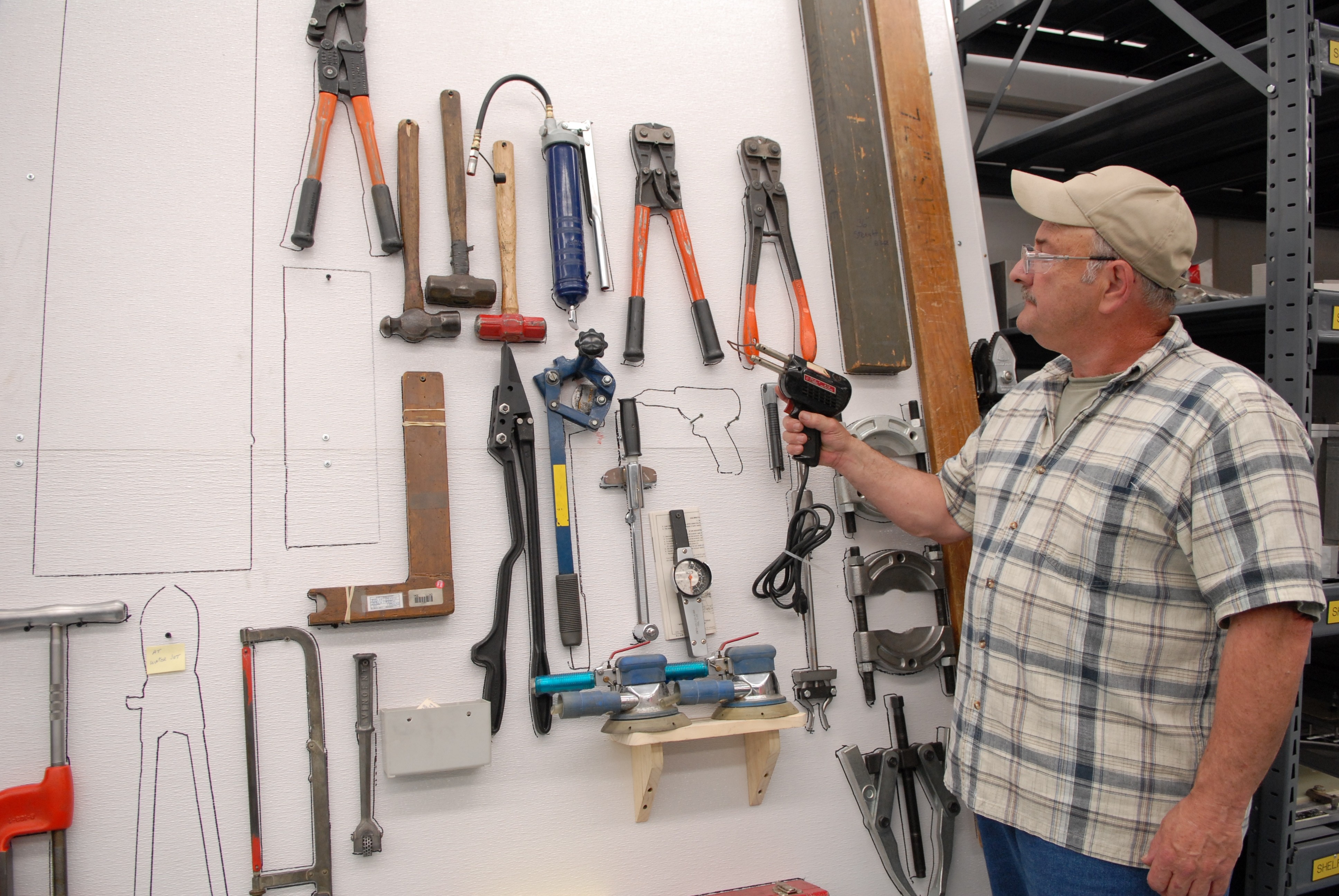A Tobyhanna machinist improved working conditions in the machine shop by devising a plan to organize 25,000 tools using 6S processes.
It didn't take long for Ron Reddington to convince coworkers that the shop could run more efficiently by implementing the visual management techniques of sort, straighten, scrub, safety, standardize, and sustain. Following his lead, the 40-member team helped create shadow boards, label drawers and customize distribution centers to replace the clutter that made it difficult and time consuming to inventory and find items in the work area or tool crib.
"Everyone was skeptical at first," Reddington said. "When they saw the progress I was making, they were all on board and let me do what I needed to do." During his 20-year career, the former Air Force maintenance superintendent employed the same methods to keep track of tools used to fix military aircraft.
Set-up time on the machines has reduced drastically, according to Paul Hartz, Machining Branch chief. Hartz noted that workers gained as many as two hours on individual tasks after implementing the suggested changes.
For instance, several tool stations were strategically placed around the work area for easy access by the machine operators. And, to help track all the tools in the tool crib, employees have to sign for and return them when finished.
"Everyone seems pleased with the results," Hartz said. "It's been great to see the shop evolve; become more efficient."
It has taken about a year to put the basic steps of 6S into practice. During this time, employees discovered that waste in processes, unnecessary movement and excessive inventory were hampering how well the shop operated.
"We found things that didn't belong in the tool crib and items that were no longer serviceable or old," Reddington said. "Now there's a place for everything and everything in its place."
The shadow boards outline where the tools go and hundreds of drawers are labeled for easy recognition. The depot also reinstituted the earlier practice of designating tool crib attendants to maintain the inventory, and distribute and retrieve parts and tools.
"To me, this is what Lean is all about," said Mike Sudimak, industrial engineer in the Productivity, Improvement and Innovation Directorate's Research and Analysis Division. "It's about people following through with an idea to make their work area, and subsequently the depot, run smoother, save time and save money."
Sudimak hopes others will follow Reddington's example of taking an idea and seeing if it works. "Lean is about teaching and giving employees the tools and techniques, knowledge and ability to do it on their own," he added.
Tobyhanna Army Depot is the Defense Department's largest center for the repair, overhaul and fabrication of a wide variety of electronics systems and components, from tactical field radios to the ground terminals for the defense satellite communications network. Tobyhanna's missions support all branches of the Armed Forces.
About 5,800 personnel are employed at Tobyhanna, which is located in the Pocono Mountains of northeastern Pennsylvania.
Tobyhanna Army Depot is part of the U.S. Army CECOM Life Cycle Management Command. Headquartered at Fort Monmouth, N.J., the command's mission is to research, develop, acquire, field and sustain communications, command, control, computer, intelligence, electronic warfare and sensors capabilities for the Armed Forces.


Social Sharing